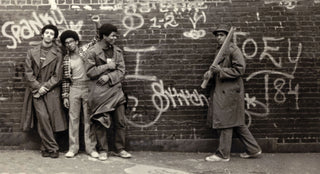If you’re at all like me, tagging exists in a vacuum of all time. There is my 30-something-year-old universe in which graffiti has always been scrawled on dingy subway tiles. Bathroom mirror etchings are as old as the sunrise and John McCain. If I want to get real with context, my historical purview extends to a subterranean dance-off in Michael’s video for “Bad,” or ruffians tagging the footclan clubhouse in the first Turtles flick.
But filmmaker Roger Gastman’s Wall Writers: Graffiti in its Innocence is a fast-paced, step-by-step historical accounting of the American tagging explosion in the late-1960s.
The doc’s first seconds feature a hilariously outdated news-segment in which a silver-haired reporter cautions against a rise in these mysterious scrawlings. Flanked by jovial youths on all sides, and slowly strolling in front of a tagged section of wall, the reporter informs, “The Vandals were a tribe of people who invaded Europe in the Fourth and Fifth Century, and for no apparent reason, destroyed much of what they found there. Sometimes it seems as if the Vandals live again, and have invaded the United States of America.”
You laugh.
And as the documentary quickly progresses, you learn that the birth of American graffiti was not about destruction at all, but rather creation. Before hashtags and well-curated selfies, there was this bohemian notoriety. Writer Coco 184 recalls how the initial call to that attention was the mystique of having your name scrawled up for all to see. “The dynamic of writing your name, of doing something illegal, of having other people guess ‘who’s this person’—is one of the many things that attracted me.”
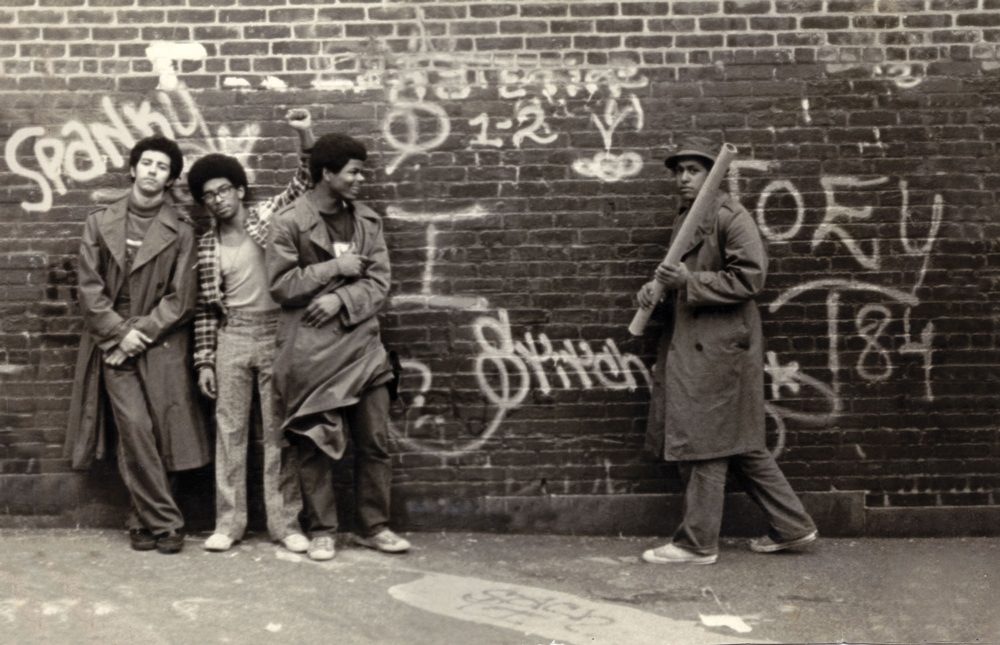
Snake 1, Static 5, Flash 191, and Stitch 1 in Washington Heights, New York, 1973.
You couldn’t buy followers. You had to have a felt tip and a spray can.
The narrative continues along a through-line of interview segments with O.G. writers from the New York and Philly scenes, and is pointedly interjected with news segments from the ’60s and ’70s, chronicling the rising tide of “vandalism.” The narration duties fall to counter-culture icon John Waters—which I must admit, I first found to be an odd choice—but then again, who better to tie in exposition than a man whose mere existence is a middle-finger to the American mainstream?
Then you’re right there with salt and pepper-haired originals like Rocky 184, Coco 184, Phil T Greek, Henry 161 and Taki 183, getting the origin story of the big-bang of the New York scene. Outside of the shock you receive that all of these O.G. writers look like they could be anyone’s parents, you’re quickly baffled by how they seem to corroborate the rise of the movement.
You couldn’t buy followers. You had to have a felt tip and a spray can.
You land right in Manhattan’s Washington Heights neighborhood and the appearance of a simple tag by a cat named Julio 204. Shortly thereafter, other writers sought the glamour of this mysterious Julio and followed his lead. Tags were simple. Your name in block letters and your street number.
Then we meet the inglorious Taki 183, a now-bespectacled dad-type in a polo shirt, looking like a straight-laced father who just dropped his twins off at Karate. As corroborated by just about every New York writer in the flick, it was Taki’s tags that really began the explosion, as he was the first to branch out of just bombing his own neighborhood.
In his late teens in the summer of 1970, he worked as a messenger delivering packages around New York City. He recalls that instead of catching taxis and the train to his deliveries, he’d just walk, so he could hit any and every pole he came across all around the city. “I didn’t start it,” he proclaims, “I was just the next step.”
As he says it, you can’t believe it’s this guy that caught the eye of everyone.
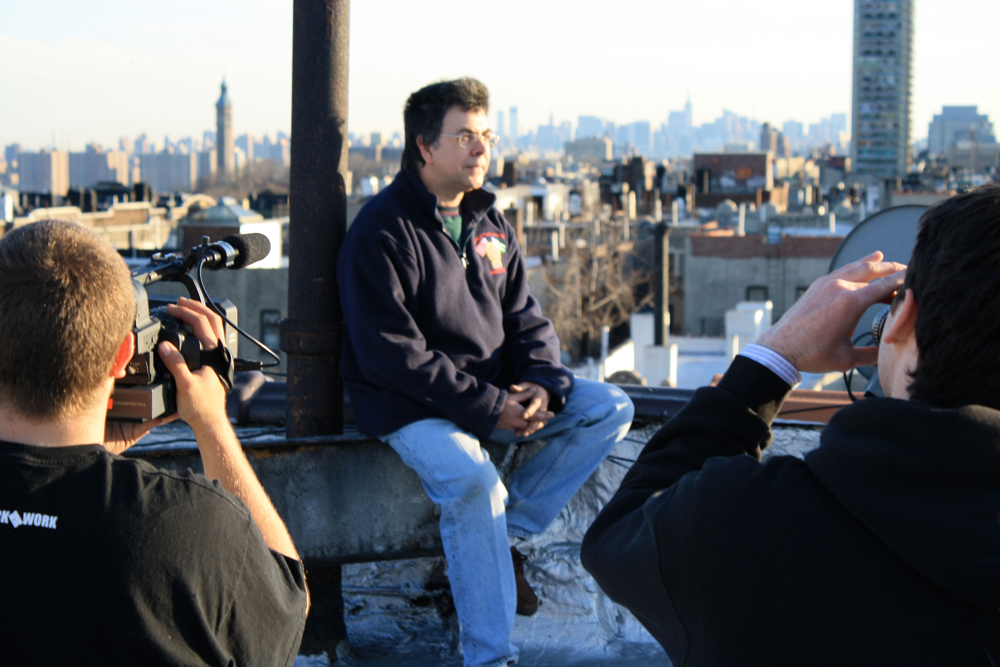
Filming with Taki 183
Then the film flies down to Pennsylvania, where the urban contemporaries of the New York scene were marking their territories as an alternative to joining gangs in North and West Philly.
You meet some gents by the name of Kool Klepto Kidd, and probably the coolest MF’er on film, a tagging legend Cornbread.
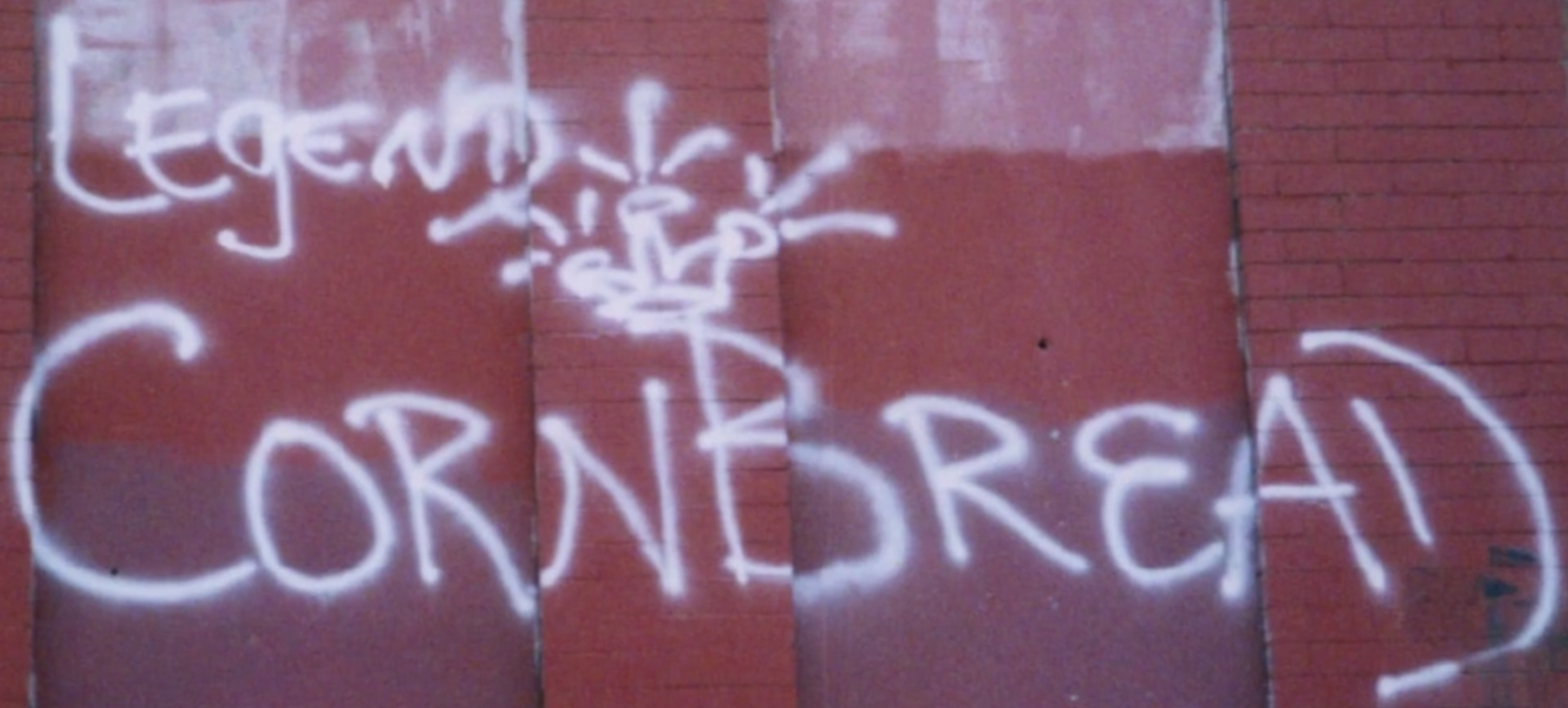
Their stories are the same as their New York counterparts: poor disaffected teens with free-time but weren’t into the gang scenes in their locales. How to pass the time? Put your name up. And put it up everywhere.
It’s in the Philly portion of the doc where you can see how the some of the shared values of youth culture permeated the nonsense of manufactured beefs. In one of the flick’s more absorbing moments, you watch as Cool Earl describes a night where a North Philly clique ran into a West Philly clique at a local hangout. Instead of causing an all-out brawl, the two crews seemed to be in awe of the other, and ended up joining forces for an all-out, all-night tagging spree, bombing everything they could find as one united front.
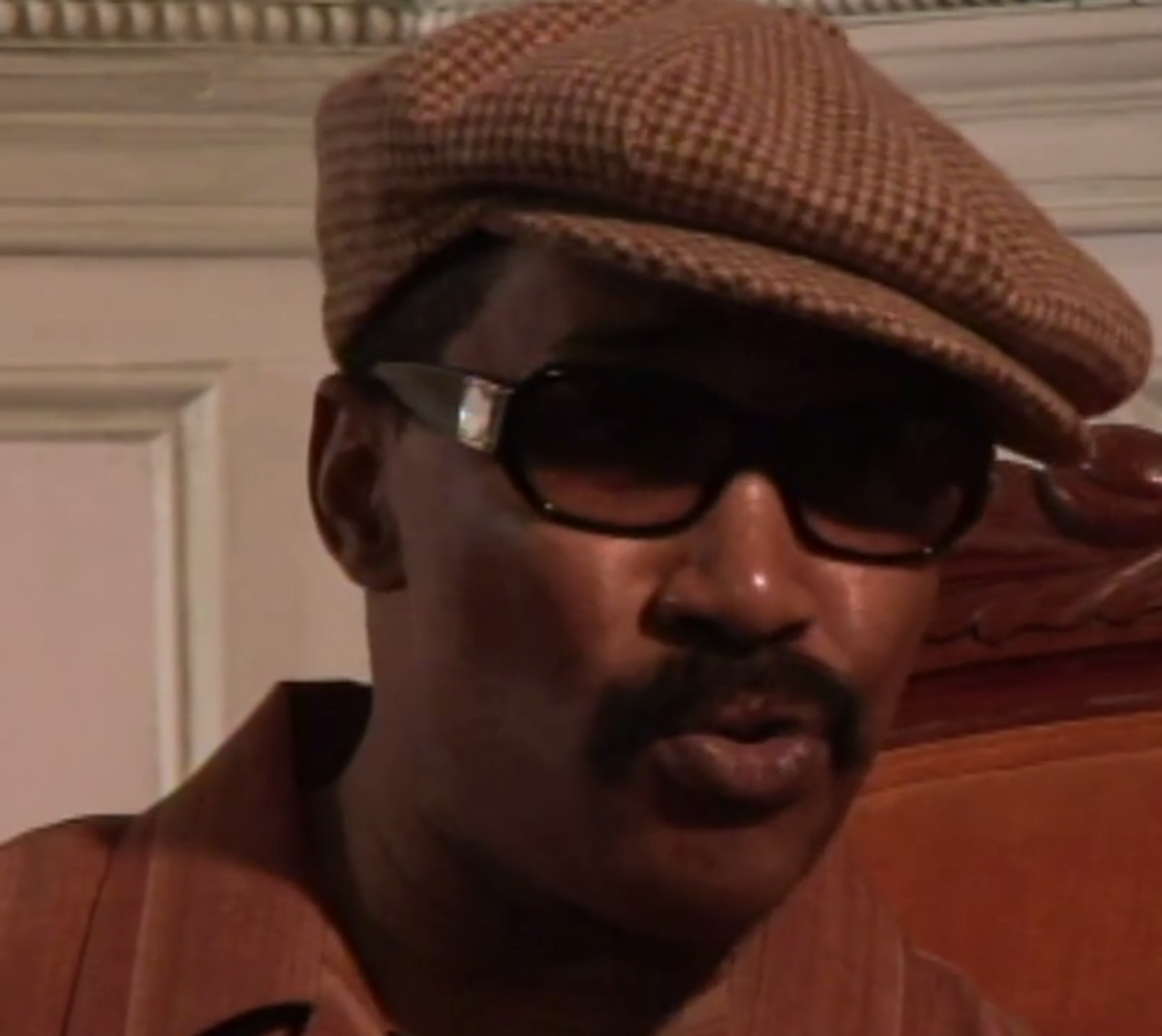
Cornbread in the film. Courtesy of Roger Gastman
This charming tone carries throughout the short hour and some change run-time, doing what good documentaries do—not only informing, but entertaining and inspiring the viewer.
Gastman’s film takes the time to go through the nuances of the scenes from 1968-1972, but it feels like it flies by in an enjoyable flash. The news clips that blot the feature become comical to an absurd degree as it carries on, with the so-called mainstream world always clamoring to make sense of a movement just beyond their grasp. The older and straight-laced, always two steps behind the youth culture, and three steps behind the underground.
How to pass the time? Put your name up. And put it up everywhere.
And those same clips juxtapose handsomely with the documentary’s glaring takeaway. The inception of the American graffiti movement was not about gangs, or vandalism, or even notoriety, but rather that unity found in expression. In fact, Director Gastman generously received archived footage from filmmaker Robert Moran, Director of Sly Artistic City (it’s on YouTube)—a Philadelphia-focused graffiti documentary that plunges deep into the old Philly scenes.
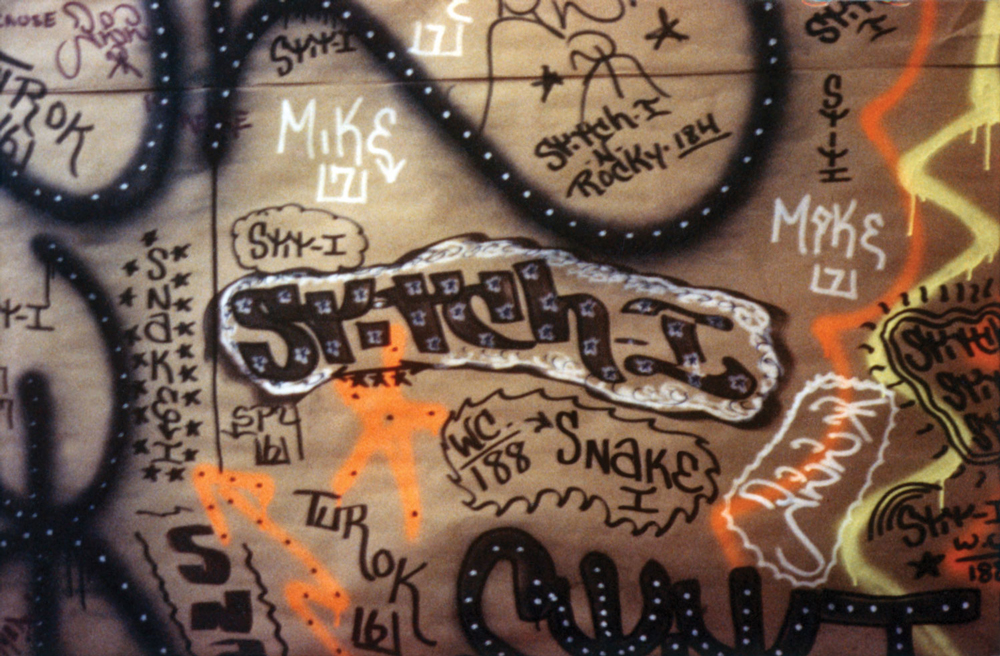
UGA canvas featuring Stitch 1 and Rocky 184, 1973.
After we corresponded with Gastman, he noted that unity resonated far beyond sharing those same walls in their early years. The Philadelphia screening of the film found a standing room audience of over 400 in attendance. Cool Earl ran into some of his friends that he hadn’t seen in 30 years, and as Gastman described it, “their friendships picked up right where they left off,” adding, “There were many tears and hugs.”
One of the films closing shots finds the the Washington Heights crews out together in their older ages, painting their originals tags on walls in modern day New York. Gastman tells us, “I look at this as much much more than a graffiti film. It tells the store of the birth of a culture and of friendship and survival.” Cute to do the aww sentimentality at seeing older folks tag, but the gratification comes in seeing how happy it makes them to watch one another scrawl. It becomes this apparent tale of community and friendship birthed by a once disreputable blight—a blight—that is now a global phenomenon.
At one point, famed graffiti photographer Jon Naar notes, “They call themselves ‘writers.’ I do not recall any of them calling themselves ‘artists.’” But after watching Wall Writers I’d beg to differ. The term legends comes to mind.
***

